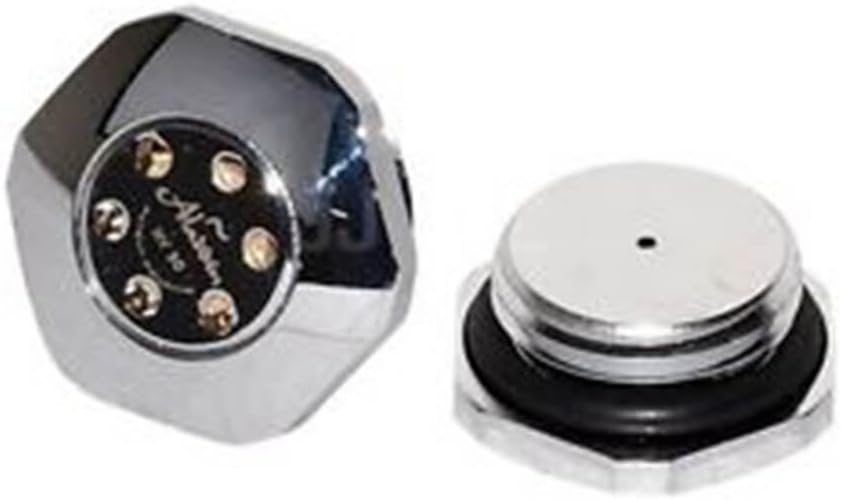
HV30 Aladdin Self Bleeding Automatic Radiator Valve 1/2" BSP Single Valve
FREE Shipping
HV30 Aladdin Self Bleeding Automatic Radiator Valve 1/2" BSP Single Valve
- Brand: Unbranded

Description
If your steam radiator isn’t warming up properly, cleaning the air vent can help the heat to circulate properly. The vents on steam radiators are designed to allow air to escape naturally, but these can get clogged with dirt and particles and – similarly to hot water radiators – stop the radiator from heating up. Close the drain valve and add fresh coolant, generally a 50/50 mix of antifreeze and distilled water (not tap water, which can form mineral deposits.) Do not overfill the coolant when you do this. [18] X Expert Source Duston Maynes Yes, provided the temperature of the piping allows the valve to operate at 35°C for the Hygroseal™ Autovents. 14) Can the valves work on negative pressure systems? Once a radiator is rusting enough to leak then it’s time to replace the radiator. How to Remove a Worn Radiator Bleed Valve To bleed a radiator, you need to first identify that it is a hot water radiator (rather than a steam-based one), turn off your central heating to avoid scalding, lay down towels to protect against water damage, and use a bleed key to open the bleed valve in your radiator, to release the trapped air inside.
Radiator Air Vents | Automatic Vents | Radiator Bleed Valve Radiator Air Vents | Automatic Vents | Radiator Bleed Valve
If your radiator problem is accompanied by an accumulation of water beneath the radiator, your radiator has a leak. Try turning your heat off, then tightening the nut(s) on your radiator's inlet valve. If this doesn't fix the problem, the nut may be corroded - replace them or call a professional. On a Closed, pressurised system: After the air absorbed in the water has separated, the best early indicator of a leak is a drop in pressure of the system. An Autovent should, if anything, lead to a faster drop in pressure so an even earlier indication of a leak. On a header-tank system: Air can enter the system through micro-gaps in joints etc, without a leak, but in some cases a leak could lead to air collecting in one radiator. In those cases fitting an Autovent might delay the identification of a leak. On such systems, NLB recommends that Autovents should be fitted to installed radiators that have a history of collecting air if no leak in the system has been identified.It’s always a good idea to use an actual radiator bleed key to bleed your radiators, as this reduces the chance of damage to the valve (and a potentially costly repair or replacement). If you can remove the screw or small nut after isolating the radiator, you can add some jointing compound to the screw or PTFE tape to the nut and refit it. Locate your external filling hose. It is usually close to the boiler, but it can sometimes sit under the kitchen sink or in the airing cupboard. Knowing how to bleed a radiator can save you a few quid and from having to wait for a plumber to sort it. Bleeding a radiator
How To Bleed a Radiator: Easy DIY Step By Step Guide How To Bleed a Radiator: Easy DIY Step By Step Guide
The HV30 model or OEM model (Original Equipment Manufacturer) is a lower cost ½” BSP version with exactly the same mechanism inside, lasting the same amount of time. The standard radiator tapping size for Panel Radiators and Towel Radiators (80% of market) is the ½” BSP tapping. Bleeding radiators will inevitably cause some water spillage, so it’s a good idea to lay down towels or dust sheets to protect your floors from damage, especially if you have lovely, pale carpets. A typical radiator should bleed completely in no more than 20 to 30 seconds. This can change depending on the radiator’s size and the volume of trapped air. Continue to keep bleeding the radiator until water starts to flow from the bleed valve and the hissing sounds stops. This indicates that you have completely drained the radiator of the air. How can I tell whether bleeding my radiatorswas successful? This is the 1/8” BSP model. We provide a 1/8” Micro model that will fit cast Iron ‘School Type’ radiators (made in cast iron or aluminium section).However, for modern radiators with standard slotted screws in their bleed valves, a flat-headed screwdriver will do the job just as well if you don’t have a key. If your radiator is of the older variety or features a different kind of bleed screw, for example, a hexagonal or square knob, you can try an Allen key or radiator spanner. You will have to drain (or partially drain) the central heating system if this is the case. Radiator Leaking From Bleed Valve You might need to repressurize your boiler if the pressure is too low. Even though you can complete this task on your own, we do advise calling a heating engineer if you have any doubts or believe you’ll find it difficult to complete it on your own.
- Fruugo ID: 258392218-563234582
- EAN: 764486781913
-
Sold by: Fruugo
